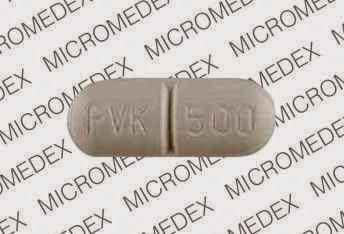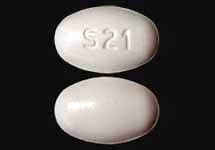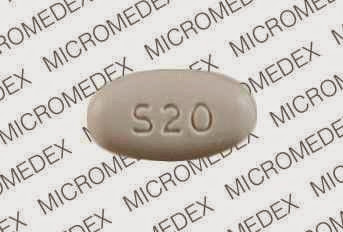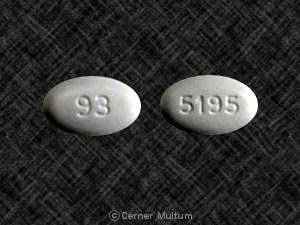PENICILLIN G POTASSIUM
(PEN i SIL in G poe TAS ee um) Brand: Pfizerpen










What is the most significant information I must know about penicillin G potassium?
• You must not use this medicine if you are allergic to penicillin. Speak your doctor if you have ever had an allergic reaction to a cephalosporin antibiotic such as Ceftin, Cefzil, Omnicef, Keflex, and others.
• Till using penicillin G potassium, speak your doctor if you have asthma or a history of allergies, liver malady, kidney malady, or heart disease.
• Use this medicine for the full predesigned length of time. Your symptoms may improve till the infection is completely cleared. Penicillin G potassium will not treat a viral infection such as the general cool or flu.
• After you have finished your treatment with penicillin G potassium, your doctor may want to do trials to create certain your infection has completely cleared up.
What is penicillin G potassium?
• Penicillin G potassium is a fast-acting antibiotic that fights bacteria in your body.
• Penicillin G potassium is used to treat much various types of severe infections, including strep and staph infections, diphtheria, meningitis, gonorrhea, and syphilis.
• Penicillin G potassium is also used to prevent infections of the heart valves in people with determined heart conditions who need to have dental work or surgery.
• Penicillin G potassium may also be used for purposes not listed in this medicine guide.
What must I discuss with my healthcare provider till taking penicillin G potassium?
• You must not use this medicine if you are allergic to penicillin. Speak your doctor if you have ever had an allergic reaction to a cephalosporin antibiotic such as Ceftin, Cefzil, Omnicef, Keflex, and others.
• To create certain you can safely use penicillin G potassium, speak your doctor if you have any of these another conditions:
· asthma or a history of allergies;
· liver disease;
· kidney malady; or
• FDA pregnancy category B. This medicine is not expected to be deleterious to an unborn child. Speak your doctor if you are pregnant or plan to become pregnant during treatment.
• Penicillin G potassium can pass into breast milk and may harm a nursing child. Do not use this medicine without telling your doctor if you are breast-feeding a baby.
How must I take penicillin G potassium?
• Penicillin G potassium is injected into a muscle or into a vein through an IV. You may be shown how to use an injection at house. Do not self-inject this medication if you do not fully understand how to give the injection and properly dispose of used needles, IV tubing, and another items used to inject the medicine.
• Penicillin G potassium may also be injected into the membrane surrounding the lungs, or into the fluid surrounding the spinal cord. The medication should be given slowly through an IV infusion, and can take up to 24 hours to complete.
• Prepare your doze in a syringe only when you are ready to give yourself an injection. Do not use the medicine if it has changed colors or has particles in it. Call your doctor for a new prescription.
• Use every disposable needle only one time. Throw away used needles in a puncture-proof container (ask your pharmacist where you can get one and how to dispose of it). Hold this container out of the reach of children and pets.
• Use this medicine for the full predesigned length of time. Your symptoms may improve till the infection is completely cleared. Penicillin G potassium will not treat a viral infection such as the general cool or flu.
• If you use this medicine long-term, your blood may need to be tested to create certain the medication is not causing deleterious effects. Your kidney or liver function may also need to be tested. Visit your doctor regularly.
• This medicine can reason false results with determined lab trials for glucose (sugar) in the urine. Speak any doctor who treats you that you are using penicillin G potassium.
• After you have finished your treatment with penicillin G potassium, your doctor may want to do trials to create certain your infection has completely cleared up.
• Store the powder at room temperature away from moisture and heat.
• After mixing the powder with a diluent, store in the refrigerator and use it within 7 days. Do not freeze.
• Penicillin G potassium that is supplied as a frozen solution must be stored in a deep freezer at a temperature of 4 degrees adown 0 (F).
• Thaw the solution either in a refrigerator or at room temperature. Do not heat the medication to thaw it more quickly.
• Penicillin G potassium that is thawed in the refrigerator must be used within 14 days. If you have thawed the medication at room temperature, you should use it within 24 hours. Do not refreeze.
• Once the solution has been thawed, it must look clear. Do not use the medication if it looks cloudy or has particles in it, or if the medication container leaks. Call your doctor or pharmacist for a new prescription.
What happens if I miss a dose?
• Use the medicine as soon as you remember. If it is nearly time for the following doze, skip the missed doze and use the medication at the following regularly scheduled time. Do not use extra medication to create up the missed dose.
What happens if I overdose?
• Search abnormal medical attention if you think you have used too many of this medication.
• Overdose symptoms may include confusion, agitation, hallucinations, or seizure (convulsions).
What must I avoid while taking penicillin G potassium?
• Antibiotic medicines can reason diarrhea, which may be a sign of a new infection. If you have diarrhea that is watery or bloody, stop taking this medicine and call your doctor. Do not use anti-diarrhea medication unless your doctor tells you to.
What are the possible side effects of penicillin G potassium?
• Get abnormal medical help if you have any of these signs of an allergic reaction: hives; difficulty breathing; swelling of your person, lips, tongue, or throat.
• Call your doctor at once if you have any of these serious side effects:
· diarrhea that is watery or bloody;
· blood in your urine;
· feeling like you might pass out;
· fever, chills, swollen glands, body aches, flu symptoms, rash or itching, muscle or joint pain, night sweats, common ill feeling;
· white patches or sores internal your mouth or on your lips;
· urinating smaller than normal or not at all;
· skin rash with bruising, severe tingling, numbness, pain, muscle weakness;
· swelling in your hands or foots;
· pale or yellowed skin, dark colored urine, fever, confusion or weakness;
· light bruising, unusual bleeding (nose, mouth, vagina, or rectum), purple or red pinpoint spots under your skin;
· twitching or uncontrollable muscle movements; or
· heighten thirst, feeling restless, heighten urination, muscle pain or weakness, irregular heart course, weak pulse, tingly feeling, feeling light-headed, fainting, or seizure (convulsions).
• Smaller serious side effects may include:
· overactive reflexes;
· nausea, vomiting;
· black or hairy tongue; or
· pain, swelling, bruising, or irritation near the IV needle.
• This is not a complete list of side effects and others may occur. Call your doctor for medical advice about side effects. You may message side effects to FDA at 1-800-FDA-1088.
What another drugs will affect penicillin G potassium?
• Speak your doctor about all another medications you use, especially:
· aspirin or indomethacin (Indocin);
· birth control pills;
· methotrexate (Rheumatrex, Trexall(;
· probenecid (Benemid);
· an antibiotic such as chloramphenicol (Chloromycetin) or erythromycin (E.E.S., EryPed, Ery-Tab, Erythrocin);
· a diuretic (water pill) such as furosemide (Lasix) or ethacrynic acid (Edecrin);
· sulfa drugs (Bactrim, Septra, Sulfatrim, SMX-TMP, and others); or
· a tetracycline antibiotic, such as doxycycline (Doryx, Oracea, Periostat, Vibramycin), minocycline (Dynacin, Minocin, Solodyn, Vectrin), or tetracycline (Brodspec, Panmycin, Sumycin, Tetracap).
• This list is not complete and another drugs may interact with penicillin G potassium. Speak your doctor about all medications you use. This includes prescription, over-the-counter, vitamin, and herbal commodity. Do not start a new medicine without telling your doctor.
Where can I get more information?
• Your pharmacist can provide more information about penicillin G potassium.
Remember, hold this and all another medicines out of the reach of children, never share your medicines with others, and use this medicine only for the indication prescribed.
Disclaim: Each effort has been made to ensure that the information provided by Cerner Multum, Inc. ('Multum') is accurate, up-to-date, and complete, but no guarantee is made to that effect. Drug information contained herein may be time sensitive. Multum information has been compiled for use by healthcare practitioners and consumers in the United States and therefore Multum does not warrant that uses external of the United States are appropriate, unless specifically indicated otherwise. Multum's drug information does not endorse drugs, diagnose patients or recommend therapy. Multum's drug information is an informational resource designed to assist licensed healthcare practitioners in caring for their patients and/or to serve consumers viewing this service as a supplement to, and not a substitute for, the expertise, skill, knowledge and judgment of healthcare practitioners. The absence of a warning for a given drug or drug combination in no way must be construed to indicate that the drug or drug combination is safety, effective or appropriate for any given patient. Multum does not assume any responsibility for any aspect of healthcare administered with the help of information Multum provides. The information contained herein is not intended to cover all possible uses, directions, precautions, warnings, drug interactions, allergic reactions, or adverse effects. If you have questions about the drugs you are taking, check with your doctor, nurse or pharmacist.